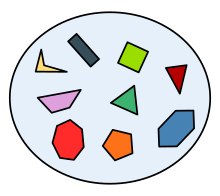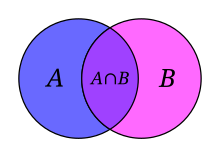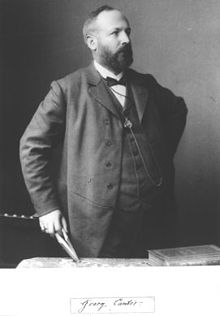A set is the numerical model for an assortment of different things; a set contains components or individuals, which can be numerical objects of any sort: numbers, images, focuses in space, lines, other mathematical shapes, factors, or considerably other sets. The set with no component is the vacant set; a set with a solitary component is a singleton. A set might have a limited number of components or be an endless set. Two sets are equivalent assuming they have unequivocally the equivalent elements.

Sets are omnipresent in current science. For sure, set hypothesis, all the more explicitly Zermelo-Fraenkel set hypothesis, has been the standard method for giving thorough establishments to all parts of science starting from the principal half of the twentieth century.
Representation theory
Portrayal hypothesis is a part of math that reviews unique logarithmic designs by addressing their components as direct changes of vector spaces, and studies modules over these theoretical mathematical structures. fundamentally, a portrayal makes a theoretical mathematical item more concrete by depicting its components by grids and their mathematical tasks (for instance, network expansion, framework increase). The hypothesis of networks and direct administrators is surely known, so portrayals of additional theoretical items as far as natural straight polynomial math objects gathers properties and at times work on estimations on additional theoretical speculations.
The mathematical items managable to such a portrayal incorporate gatherings, cooperative algebras and Falsehood algebras. The most conspicuous of these (and generally the first) is the portrayal hypothesis of gatherings, wherein components of a gathering are addressed by invertible networks so that the gathering activity is grid multiplication.
Portrayal hypothesis is a helpful technique since it lessens issues in conceptual polynomial math to issues in straight variable based math, a subject that is well understood. Moreover, the vector space on which a gathering (for instance) is addressed can be limitless layered, and by permitting it to be, for example, a Hilbert space, strategies for examination can be applied to the hypothesis of groups. Portrayal hypothesis is likewise significant in physical science on the grounds that, for instance, it depicts what the balance gathering of an actual framework means for the arrangements of conditions depicting that system.
Portrayal hypothesis is inescapable across fields of arithmetic for two reasons. In the first place, the utilizations of portrayal hypothesis are diverse: notwithstanding its effect on polynomial math, portrayal hypothesis:
enlightens and sums up Fourier examination by means of symphonious analysis,
is associated with math by means of invariant hypothesis and the Erlangen program,
has an effect in number hypothesis through automorphic structures and the Langlands program.
Second, there are assorted ways to deal with portrayal hypothesis. Similar items can be concentrated on utilizing techniques from mathematical calculation, module hypothesis, logical number hypothesis, differential calculation, administrator hypothesis, arithmetical combinatorics and topology.
The outcome of portrayal hypothesis has prompted various speculations. One of the most broad is in class theory. The arithmetical items to which portrayal hypothesis applies can be seen as specific sorts of classes, and the portrayals as functors from the article classification to the classification of vector spaces. This depiction focuses to two clear speculations: first, the mathematical items can be supplanted by additional overall classifications; second, the objective class of vector spaces can be supplanted by other surely knew classifications.
Set theory
Set hypothesis is the part of numerical rationale that reviews sets, which can be casually portrayed as assortments of articles. In spite of the fact that objects of any sort can be gathered into a set, set hypothesis, as a part of math, is for the most part worried about those that are pertinent to science in general.

The advanced investigation of set hypothesis was started by the German mathematicians Richard Dedekind and Georg Cantor during the 1870s. Specifically, Georg Cantor is normally viewed as the organizer behind set hypothesis. The non-formalized frameworks researched during this beginning phase go under the name of gullible set hypothesis. After the revelation of oddities inside credulous set hypothesis (like Russell’s mystery, Cantor’s conundrum and the Burali-Forti Catch 22) different aphoristic frameworks were proposed in the mid 20th hundred years, of which Zermelo-Fraenkel set hypothesis (regardless of the adage of decision) is as yet the most popular and generally contemplated.
Set hypothesis is normally utilized as a fundamental framework for the entire of math, especially as Zermelo-Fraenkel set hypothesis with the saying of choice. Other than its essential job, set hypothesis likewise gives the structure to foster a numerical hypothesis of boundlessness, and has different applications in software engineering (like in the hypothesis of social polynomial math), reasoning and formal semantics. Its essential allure, along with its conundrums, its suggestions for the idea of vastness and its numerous applications, have made set hypothesis an area of significant interest for scholars and rationalists of science. Contemporary examination into set hypothesis covers a huge swath of points, going from the design of the genuine number line to the investigation of the consistency of enormous cardinals.
Mathematics
Arithmetic is a subject matter that incorporates the subjects of numbers, recipes and related designs, shapes and the spaces wherein they are contained, and amounts and their changes. These subjects are addressed in present day arithmetic with the major subdisciplines of number theory, algebra, geometry, and analysis, separately. There is no broad agreement among mathematicians about a typical definition for their scholarly discipline.
Most numerical action includes the disclosure of properties of unique articles and the utilization of unadulterated motivation to demonstrate them. These items comprise of either reflections from nature or — in present day math — substances that are specified to have specific properties, called aphorisms. A proof comprises of a progression of uses of rational guidelines to currently settled results. These outcomes incorporate recently demonstrated hypotheses, adages, and — in the event of reflection from nature — a few fundamental properties that are viewed as obvious beginning stages of the hypothesis under consideration.
Arithmetic is fundamental in the innate sciences, designing, medication, finance, software engineering and the sociologies. Despite the fact that math is widely utilized for displaying peculiarities, the key insights of science are autonomous from any logical trial and error. A few areas of math, like measurements and game hypothesis, are created in close connection with their applications and are much of the time gathered under applied math. Different regions are grown autonomously from any application (and are subsequently called unadulterated math), yet frequently later find commonsense applications. The issue of number factorization, for instance, which returns to Euclid in 300 BC, had no reasonable application before its utilization in the RSA cryptosystem, presently broadly utilized for the security of PC organizations.
By and large, the idea of a proof and its related numerical thoroughness originally showed up in Greek math, most eminently in Euclid’s Elements. Since its start, science was basically isolated into calculation and number-crunching (the control of normal numbers and divisions), until the sixteenth and seventeenth hundreds of years, when algebra[a] and minute math were presented as new regions. From that point forward, the communication between numerical developments and logical revelations has prompted a quick lockstep expansion in the improvement of both. Toward the finish of the nineteenth hundred years, the basic emergency of science prompted the systematization of the proverbial method, which proclaimed a sensational expansion in the quantity of numerical regions and their fields of use. The contemporary Math Subject Order records in excess of 60 first-level areas of science.
Set
A set is a thought from math. A set has individuals (likewise called components). A set is characterized by its individuals, so any two sets with similar individuals are something similar

Illustration of a bunch of polygons
A set can’t have a similar part at least a few times. Enrollment is the main thing that is important. For instance, there is no structure or other distinction among the individuals. Anything can be an individual from a set, including sets themselves (however in the event that a set is an individual from itself, oddities, for example, Russell’s conundrum can occur).
How to manage sets
Envision the set is a sack.
Component of
Different things can be placed into a pack. Later on, a decent inquiry would be in the event that something specific is clinched. Mathematicians call this component of. Something is a component of a set, on the off chance that that thing can be tracked down in the separate sack.
Dissimilar to a pack, a set can contain all things considered one thing of a given sort. So for a bunch of natural products, it would have no effect in the event that there is one orange, or on the other hand in the event that there are 10 oranges.
Void set
Like a pack, a set can likewise be vacant. The unfilled set resembles a vacant pack: it doesn’t have anything in it. The “vacant set” is likewise called the invalid set and is addressed
Universe
Assuming we consider, say, a few arrangements of American vehicles, for example a bunch of all Passages and a bunch of all Evades, we may likewise wish to think about the entire arrangement of American vehicles. For this situation, the arrangement of all American vehicles would be known as a universe.
At the end of the day, a universe is an assortment of the multitude of components one wishes to think about in a given issue.
Representation theory of finite groups
The portrayal hypothesis of gatherings is a piece of science which looks at how gatherings follow up on given structures.
Here the spotlight is specifically on tasks of gatherings on vector spaces. By and by, bunches following up on different gatherings or on sets are likewise thought of. For additional subtleties, kindly allude to the segment on stage portrayals.
Other than a couple of checked special cases, just limited gatherings will be viewed as in this article. We will likewise limit ourselves to vector spaces over fields of trademark zero. Since the hypothesis of logarithmically shut fields of trademark zero is finished, a hypothesis legitimate for a unique mathematically shut field of trademark zero is likewise substantial for each and every mathematically shut field of trademark zero. In this way, without loss of consensus, we can concentrate on vector spaces over
Portrayal hypothesis is utilized in many pieces of science, as well as in quantum science and physical science. In addition to other things it is utilized in variable based math to look at the design of gatherings. There are additionally applications in symphonious examination and number hypothesis. For instance, portrayal hypothesis is utilized in the advanced way to deal with gain new outcomes about automorphic structures.
Irreducible representation
In mathematics, specifically in the representation theory of groups and algebras, an irreducible representation 





Every finite-dimensional unitary representation on a Hilbert space 